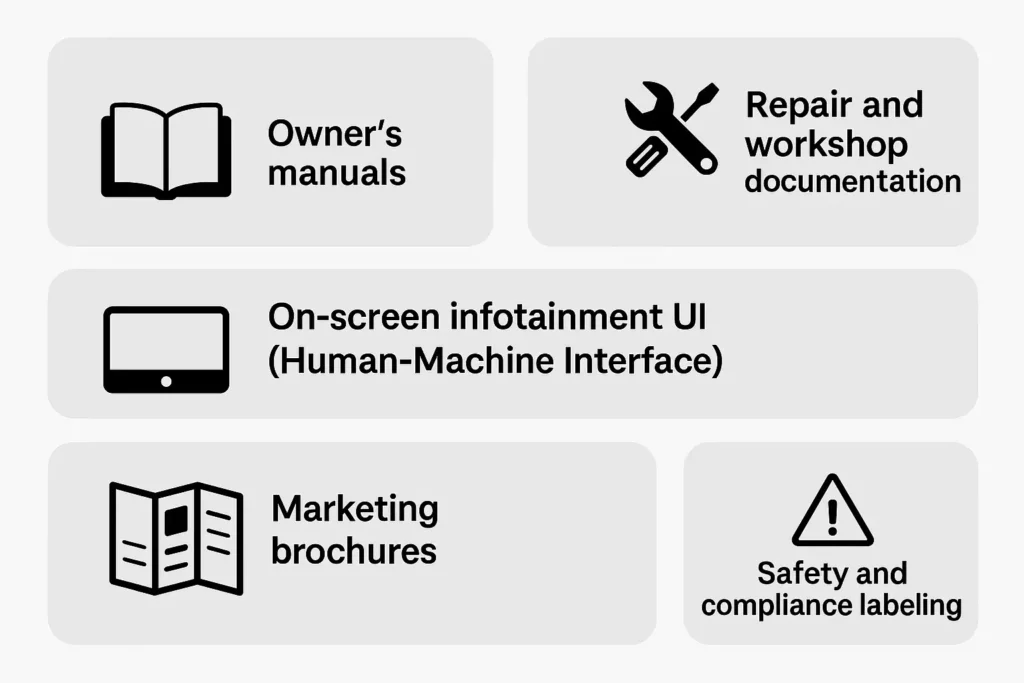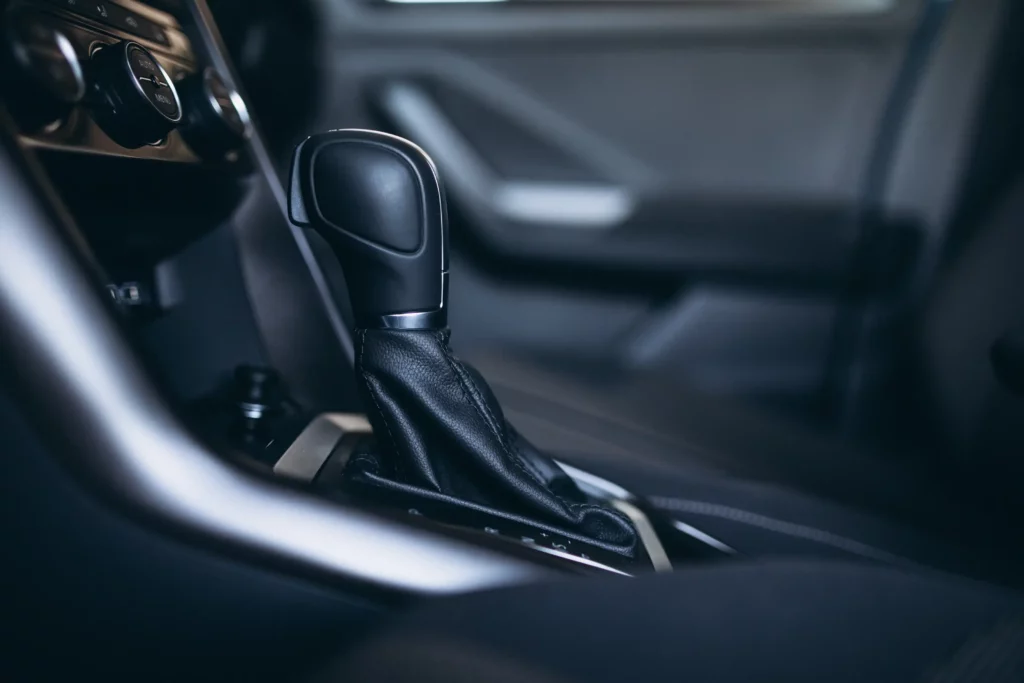Global car brands don’t just build vehicles—they build trust, safety, and innovation. But to reach drivers around the world, every detail must be communicated with precision, from the wording on a dashboard display to complex repair instructions. That’s where automotive translation plays a vital role.
Automotive translation demands technical mastery and regulatory awareness. It’s a discipline where language meets engineering, where mistranslations can lead to safety risks, compliance failures, or costly recalls.
So what exactly makes automotive translation so complex? Let’s take a ride through the unique demands of this high-stakes translation niche.
READ MORE:Industry-Specific Translation Strategies
1. Speaking Engineer: Why Every Term Matters
At the heart of the automotive industry is a world of complex mechanical, electronic, and digital systems. Translators are tasked with making highly specialized language understandable across multiple languages, without sacrificing precision.
Imagine translating a phrase like “hydraulically actuated multi-plate wet clutch system.” A literal or vague translation could confuse technicians or mislead customers. Terms like “torque,” “camshaft,” or “differential” must be translated with both technical and functional accuracy.
Even the most routine car manual contains hundreds of specialized terms that require deep industry familiarity.
Experienced translators rely on:
| Resource Type | Description |
|---|---|
| Terminology databases and translation memory | Tools to ensure consistent and accurate reuse of technical terms |
| Brand-specific glossaries | Customized word lists that align with each automaker’s language |
| Collaboration with engineers and writers | Direct consultation to clarify concepts and maintain accuracy |
A 2022 SDL industry study showed that 73% of automotive companies prioritize technical consistency over stylistic fluidity in translated materials. Why? Because even minor discrepancies can result in faulty repairs, warranty disputes, or compliance violations.
📘 Recommended Online Automotive Vocabulary Resources
B4Dealer – Chinese-English Automotive Vocabulary
Covers essential terms across engine, chassis, body, and electrical systems.
🔗 Visit Site
Zhihu Column – Automotive Abbreviations and Full Terms (CN–EN)
Well-organized list of common automotive abbreviations with full English/Chinese explanations.
🔗 Visit Site
Sohu – 247 Car Parts with Chinese-English Vocabulary
Detailed word list covering wheel system, electronic parts, and interior components.
🔗 Visit Site
Autohome – Automotive Terminology Encyclopedia
Illustrated and categorized automotive terms for beginner-friendly learning.
🔗 Visit Site
Baidu Wenku – CN–EN Automotive Vocabulary Document
Downloadable vocabulary table covering engine structures, chassis, and diagnostics.
🔗 Visit Site
TermBox – 2,000+ CN–EN Automotive Technical Terms
Large and structured database, especially helpful for translators and technical writers.
🔗 Visit Site
2. Beyond Manuals: Translating the Full Driving Experience
Automotive content comes in many forms:

Each type of content requires a different tone and translation approach. A UI message like “Check Engine” must be short, instantly recognizable, and error-free. By contrast, a service manual might detail a procedure across five pages with step-by-step instructions, torque specs, and hazard notices.
As a general rule, translators must:
- Adapt to content constraints (e.g., character limits on screens)
- Match technical tone in documentation
- Balance clarity and appeal in marketing texts
Quote: “We don’t just translate features—we translate driving experiences,” says Natalia M., a localization lead at a major German carmaker.
Translators often work alongside UX designers, engineers, and legal experts to maintain message clarity across platforms. In total, this collaborative ecosystem helps ensure consistency, functionality, and brand voice in every language.
3. Law of the Land: Navigating Legal and Safety Codes
Every vehicle must comply with regional safety laws, emissions standards, and consumer protection requirements. Translators are tasked with converting complex regulatory language without losing its legal binding force.
For instance:
- In the U.S., safety labels and user instructions must meet NHTSA (National Highway Traffic Safety Administration) standards.
- In the EU, content must comply with CE marking, the EU General Product Safety Directive, and multilingual labeling laws.
- In China, automotive manuals must be translated into simplified Chinese by certified experts for sale approval.
Here are reliable sources you can refer to for the regulatory requirements mentioned in the article: - U.S. (NHTSA – National Highway Traffic Safety Administration)
Regulations on vehicle safety standards, labeling, and documentation:
https://www.nhtsa.gov/laws-regulations - European Union (CE Marking and Product Safety Directive)
Information on CE marking and labeling rules for vehicles and components:
https://ec.europa.eu/growth/single-market/ce-marking
https://ec.europa.eu/info/business-economy-euro/product-safety-and-requirements - China (Simplified Chinese translation requirements)
Summary of China’s requirements for automotive documentation (often cited in MIIT and AQSIQ regulations):
https://www.miit.gov.cn
http://english.customs.gov.cn (for labeling/import translation requirements)
Failure to meet regulatory requirements can result in rejected certifications, delays in time-to-market, or even product recalls.

In a 2020 incident, a Japanese automaker had to reprint 50,000 manuals due to a misinterpreted airbag deployment procedure in French. The error, though small, posed safety risks and led to widespread customer confusion.
In total, legal translation in the automotive field is not just about accuracy—it’s about legal defensibility and public safety.
4. Translating Tomorrow: Keeping Pace with Auto Tech
The rise of electric vehicles (EVs), autonomous driving, and AI-assisted features has introduced a flood of new terminology. Automotive language is evolving rapidly, and translators must keep pace.
Examples include:
- Regenerative braking
- Vehicle-to-Grid (V2G) technology
- Level 3 autonomy
- Over-the-Air (OTA) software updates
Many of these terms may not yet have a standard translation in every language. That means translators must often coin terms or align with the terminology used by regulators, academics, or early adopters.
On average, localization teams in innovative car companies update their internal glossaries monthly, sometimes weekly, to reflect the latest terms.
This is especially true in localization for software-based features, where translations must reflect both tech fluency and user understanding. For example, a feature like “lane centering assist” must be translated so that it’s understandable to everyday drivers yet technically accurate.
As a general rule, linguistic teams work closely with R&D departments and product managers to understand the purpose and context of each term before translating it.
5. Driving Emotion: Translating Brands Without Losing Soul
A car brand’s voice is as carefully crafted as its engines. From taglines to feature names, translation must preserve tone, emotional impact, and local cultural nuances.
This becomes especially challenging when:
- Translating slogans (“Built Ford Tough”)
- Naming vehicle models or features
- Describing luxury or performance traits

Case in point: Mitsubishi had to rename its SUV model “Pajero” in Spanish-speaking countries, where the term is considered a vulgar slang. Chevrolet’s “Nova” famously struggled in Latin America due to the name’s literal translation: “doesn’t go.”
Marketing content must walk a tightrope: stay true to brand identity while ensuring relevance and appropriateness across cultures. On average, global carmakers localize marketing slogans into 10–15 core languages, each version adapted rather than literally translated.
As a whole, successful automotive translation demands a keen understanding of language, local culture, and emotional resonance.
6. Supply Chain Speak: Keeping Global Docs in Sync
Automotive translation isn’t confined to brochures and dashboards. It extends deep into the supply chain:
- Engineering drawings
- Procurement contracts
- Quality assurance reports
- Safety protocols
Each supplier or regional partner may contribute documents that require seamless translation and alignment with global terminology standards.
For instance, a quality standard referenced in a Chinese part supplier’s document must match the terminology used in a German OEM’s quality manual. Inconsistent translations can slow down production, confuse audits, and weaken quality control.
In total, this demands centralized terminology management, robust version control, and continuous communication between translation vendors, engineers, and compliance teams.
7. Cars That Talk: Mastering Digital Driving Language
Modern cars are now digital environments that rely heavily on embedded software to interact with users. To ensure seamless user experiences, in-car systems must be translated with a focus on precision, timing, and cultural adaptation.
Follow these key steps:
- Identify all translatable UI elements:
- Navigation prompts
- Voice command interfaces
- Warning and error messages
- Custom settings and controls
- Account for complex language structures:
- In character-based languages (e.g., Chinese, Japanese), allow for text expansion and font legibility.
- For RTL (right-to-left) languages like Arabic, adapt alignment, layout, and navigation logic accordingly.
- Apply cultural and regional localization:
- Adjust voice and language options based on dialect (e.g., French for Canada vs. France).
- Tailor tone and phrasing for local driving habits and user expectations.
- Conduct regional usability testing:
- Validate UI readability and flow in each target language.
- Ensure all functions are intuitive to users across different cultural contexts.

“Localizing in-vehicle systems is like designing a cockpit for every language. The driver should never feel lost,” says Samuel L., a UI linguist for an EV brand.
As a general rule, in-car localization must be tested in real-world scenarios to verify that drivers understand system prompts instantly and clearly—no matter where they are in the world.
8. Life-and-Death Language: Getting Safety Right
Last but not least, life-saving content such as:
- Airbag deployment procedures
- Emergency shutdown systems (for EVs)
- Child seat installation guides
- Tire blowout instructions
These must be translated with crystal clarity. No idioms. No ambiguity. The target reader must be able to react quickly and correctly under stress.
On average, these sections are reviewed multiple times by language specialists, legal teams, and subject matter experts. In some regions, certified translators or sworn linguists are required by law.
The consequences of poor translation in these documents can be dire—making them among the most critical in the entire automotive content pipeline.
8. Life-and-Death Language: Getting Safety Right
Last but not least, life-saving content such as:
- Airbag deployment procedures
- Emergency shutdown systems (for EVs)
- Child seat installation guides
- Tire blowout instructions
These must be translated with crystal clarity. No idioms. No ambiguity. The target reader must be able to react quickly and correctly under stress.
On average, these sections are reviewed multiple times by language specialists, legal teams, and subject matter experts. In some regions, certified translators or sworn linguists are required by law.
As a whole, the consequences of poor translation in these documents can be dire—making them among the most critical in the entire automotive content pipeline.
In total, automotive translation is one of the most complex and specialized domains in the localization world. As vehicles become smarter, greener, and more connected, the demand for expert translators who can keep up with change will only grow.
The next time you hear your car gently remind you to buckle up—in your native language—remember the layers of expertise behind that single line. It’s not just a translation. It’s part of a global commitment to safety, innovation, and human connection.
